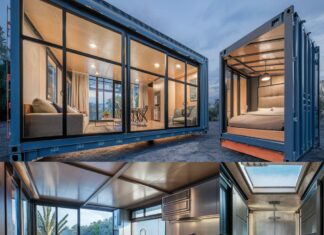Norway stands out among European countries as having some of the lowest wholesale electricity costs due to zero marginal cost hydropower generation; yet the country faces immediate challenges. In the following article, I’ll go into Norway’s 5 price regions and how they differ from one another in base facts as well as their power markets.
Northern Norway
The Northern Region covers areas located north of Trondelag and all of Nordland, as well as much of Finlandmark and eastern Norway. This region is dominated by steep mountains as well as wide fjords running mostly northwest-southeast direction. Though not as heavily glaciated as other regions, it does contain large areas of bogs and heaths.
Northern Norway’s maritime shipping and passenger ferry network connect it with southern Europe while its railroad system reaches as far north as Bodo. Air travel is also popular and has several airports serving it; Tromso, Bodo, Narvik Hammerfest Harstad Vardo are some of the larger towns located within this region.
Northern Norway’s primary economic activities historically include fishing and shipping – including transport of Swedish iron ore via Narvik. According to this article – more recently, power plants have been constructed in the region to produce electricity for domestic consumption, but their output cannot be exported due to inadequate transmission grid infrastructure.
The 100-mile transmission line connecting Nordland County substations and Balsfjord power plant will be the first of its kind and should make possible more wind farms across the region. Commercial operation should commence by no later than late 2024 at the earliest.
Southern Norway
The southern region of Norway features mountains, valleys and farmlands as well as deep fjords carved by glaciers; Sognefjorden, Hardangerfjorden and Geirangerfjorden are just three such glacier-carved waterways in the region.
The southern region of Norway serves as an anchorage point for subsea power cables linking Norway with continental Europe and Britain – an invaluable source of power that reduces Norway’s dependence on imported fossil fuels.
Since 2015, an additional 1,065.km of high-voltage lines has been installed across the country, and more projects are ongoing to further increase transmission grid capacity.
Owing to its adaptable nature, electricity systems can accommodate large fluctuations in production and consumption; however, peak demand often surpasses supply during summer, when 24-hour sunlight illuminates Oslo residents. Statnett’s national grid operator operates two mobile 150 MW gas turbine plants as backup should power shortages arise due to weather or other external influences.
Norway boasts various vegetation zones with different plant species adapted to each environment. A South Boreal bog differs from its North Boreal counterpart in terms of soil type.
The highest mountain zone stretches from Sweden’s border to roughly the midpoint of Norway, dividing Eastern from Western Norway (Ostlandet/Trondheimag). At lower altitudes (mid-alpine tundra), vegetation thrives; while higher ones (high-alpine tundra) feature snowfields lasting through to summer with permafrost being prevalent; heavy precipitation often falls here with flooding often occurring and landslides/avalanches becoming significant risks in these parts.
Eastern Norway
Eastern Norway is Norway’s most populous region and home of Oslo – a city known for its exciting cuisine and architecture. From there, mountains and forests spread outward, from Oslo Fjord towards Buskerud and Hedemark Lowlands all the way to Jotunheimen Alpine Peaks.
Large valleys and rivers in this part of Norway act as natural barriers against overland transport. No doubt it comes as no surprise that most railways and roads follow rivers and lakes, while transport between Oslo Fjord and its west bank is limited; only through using either the Oslofjord Tunnel, Randsfjorden Lake car ferry service or at Horten port is this possible.
Travelers visiting Eastern Norway will discover many points of interest, from beautiful parks to fabled Viking towns along the Oslofjord. The landscape varies with rolling hills, spruce forests, agricultural land and wide mountains with glaciers in lower areas to wide mountains with glaciers further up in higher parts. Residents are known for their friendliness and hospitality – especially in Oslo! They even boast their own dialect along with knowledge in folk music and culinary delicacies from this part of Norway.
Eastern Norway is connected to the rest of the Nordic electricity system by cross-border interconnectors to Denmark, Sweden and Germany as well as Nord Pool power exchange – giving it access to export or import power if necessary from other regions.
Interconnection capacity reduces the risk of sudden electricity price spikes caused by weather conditions in other regions of Europe. For instance, in 2022 a very rainy summer in northern Norway combined with new wind parks across the border in Sweden helped push down prices in two of Norway’s three northern bidding zones (source: https://www.reuters.com/article/norway); on the other hand, drought in southern Europe increased NO4 prices substantially.
Western Norway
This area of the country is distinguished by a series of large fjords, such as Sognefjorden, Hardangerfjord and Geirangerfjord, all created by glaciers. There are also many tall mountains here and the landscape tends to be less severe compared with areas further north and east; mountain forms tend to have rounder contours and greater diurnal temperature variations are more prominent here than elsewhere .
Trondheim region is an energy production powerhouse. Boasting access to fresh water resources and an impressive concentration of wind power capacity – including some of the country’s biggest investments over recent years – Trondheim serves as a net exporter of electricity with significant year-to-year fluctuations both in consumption and production, due mainly to weather factors.
Climate change has been a driving factor behind changes to both electricity demand and production across the country, particularly since 1990. Snow cover days have decreased substantially with exception to Trondheim and Bergen city regions (Figure 1).
Future, this region will play a critical role in unlocking Norway’s full power sector potential, especially through developing green electricity solutions. For the prissoner strøm to achieve this goal will require an electricity grid with greater flexibility, more interconnections among regions of the country and increased capacity at key connection points will facilitate use of flow-based market coupling to maximize physical grid capacity usage. It’s a benefit for the economy and the world’s power consumption.
Coupled markets will help reduce seasonal price volatility and strengthen system resilience, while new generation technologies that convert thermal and wind power into liquid fuels will cement renewables as an integral component of power supplies.
Central Norway
Sognefjord and Hardangerfjord in Central Norway are considered some of the finest in the world, boasting large glaciers such as Jostedalsbreen and Folgefonna, rolling hills in the south to high plateaus in the north, mountains, as well as shallower fjords with walls rising only several hundred meters (yards).
Troms and northeastern Finnmark is characterized by steep mountains extending all the way to the coast, interspersed by many fjords. Notable features in this region include Trollheimen’s Galdhopiggen peak and Jotunheimen range with Geirangerfjord as the highest points.
Central Norway is home to Norway’s capital city Oslo, oil and gas industry in Stavanger and the large port of Bergen. At its southern end is the Nemoral vegetation zone which spans from Soknedal in Rogaland to Fevik in Aust-Agder (including Kristiansand). Birch trees dominate here while there are few typical boreal species present.
Norway is home to a well-developed power system that connects physically and economically to other Nordic systems, while being connected continental Europe through interconnectors to Netherlands, Germany, Baltic states and Poland.
Due to its extreme latitude, Norway operates on Central European Time with daylight hours varying significantly depending on the season and region. From May through July in Oslo and southern regions such as Aalborg 24-hour sunlight can be enjoyed while up in the far north it doesn’t even rise above the horizon.









